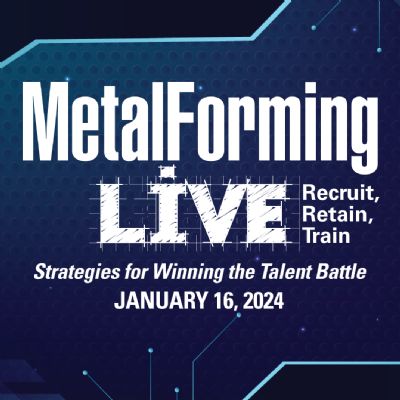 Brad Kuvin
Brad KuvinFlexibility is Today's Competitive Advantage
July 1, 2009Comments
Feel like you’re being chased by a 1000-lb. grizzly bear? To paraphrase the old joke, you don’t have to outrun the bear; you only have to outrun your competitors. In our current manufacturing environment of churning, changing business models, this means learning faster than your competition in order to remain viable. As famed business strategist Peter Senge wrote in his 1990 classic book, The Fifth Discipline:
“The ability to learn faster than your competitor may be the only sustainable competitive advantage.”
What is it that metalformers need to learn? So many companies I talk to are tasked with morphing into short-run specialists, and learning all that comes with it. They are reengineering their business models and learning how to change their production lines over quickly and efficiently from one job to another, sometimes two or three or more times per shift. Maximizing flexibility and learning the art of making the quick changeover has climbed to the top of the to-do list.
Senge wrote in his book that successful companies “continually expand their capacity to create the results they truly desire.” Becoming flexible and adaptive means learning new skills—quickly. Metal-furniture manufacturer Kimball Office has made great strides in recognizing what had to change within its manufacturing environment, and George Keremedjiev brings the story to life in this issue of MetalForming. Keremedjiev describes how Kimball Office’s newest lean-manufacturing cell is a model of flexibility, quickly accommodating changes in customer demand to produce “what the customer orders only when the order is required, with minimal if any setup, short part-travel distances, and negligible work in process.” I thank George and the management team at Kimball Office for allowing us to share the company’s lean-manufacturing journey with the readers of MetalForming.
To be sure, many other companies are successfully adapting their business models every day, refocusing efforts in product development, program management, quality, document control, purchasing, etc., to quickly learn to supply markets they never before dreamed of serving. We addressed this topic exhaustively in our special digital only-issue issue posted to our website a few weeks ago.
Specifically, articles in that digital issue address what it takes to supply metal parts and assemblies to customers in two expanding industries:
- Renewable energy (wind and solar); and
- Medical products.
A Final Note
Every week it seems we are bombarded with predictions from numerous economic experts, each with a different perspective based on different sets of data. It’s easy to become confused as to where the economy is headed. However, some degree of clarity comes from the July 2009 Business Conditions Report from the Precision Metalforming Association (PMA). Finally, trend lines from this monthly report are on the upswing, foretelling an economic recovery in our industry sooner rather than later.







 Podcast
Podcast

 Webinar
Webinar